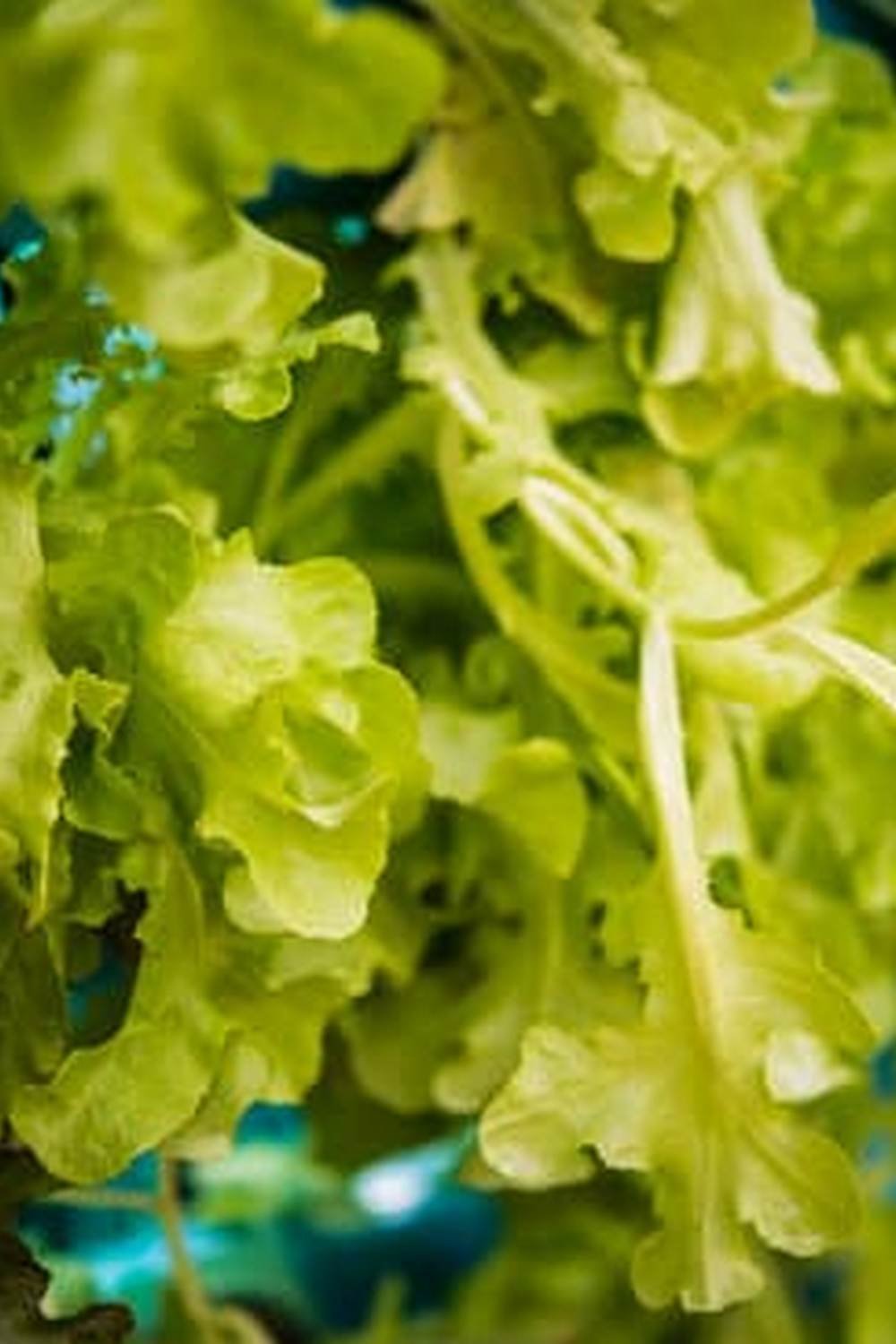Are you interested in starting a vegetable gardening indoors? Indoor vegetable gardening offers a range of benefits, from being able to grow your own food year-round to creating a beautiful and healthy indoor space.
Whether you’re new to gardening or have years of experience, this article will guide you through the process of starting an indoor vegetable garden. From choosing the right vegetables to harvesting the fruits of your labor, you’ll find all the information you need to get started on your indoor gardening journey.
Indoor vegetable gardening allows you to grow fresh produce in the comfort of your own home, regardless of the season or outdoor climate conditions. With the right tools and knowledge, you can create a thriving indoor garden that provides a sustainable source of nutritious vegetables for yourself and your family. Whether you have limited outdoor space, live in an urban environment, or simply want to bring some greenery into your home, indoor vegetable gardening is a rewarding and enjoyable activity.
In this article, we will cover everything from choosing the best vegetables for indoor gardening and selecting the right location for your garden to essential tools and supplies needed for success. You’ll learn about preparing the soil, planting your vegetables, watering and fertilizing your garden, as well as dealing with common pests and diseases. By following these steps, you can enjoy a bountiful harvest and maintain a thriving indoor vegetable garden all year round.
Choosing the Right Vegetables for Indoor Gardening
When it comes to vegetable gardening indoors, choosing the right vegetables is crucial for the success of your indoor garden. Not all vegetables are well-suited for indoor growing, so it’s important to select varieties that thrive in a controlled indoor environment. Some of the best vegetables for indoor gardening include leafy greens like lettuce, spinach, and kale, as well as compact plants such as cherry tomatoes, peppers, and herbs like basil, parsley, and chives.
Leafy greens are perfect for indoor gardening due to their relatively small size and fast growth cycle. They can be grown in containers or vertical gardens and don’t require a lot of space.
Cherry tomatoes and peppers are also great choices for indoor gardening as long as they receive adequate light. Herbs, on the other hand, are well-suited for indoor growing because they don’t require a lot of space and can thrive on a sunny windowsill or under grow lights.
When selecting vegetables for your indoor garden, consider factors such as available space, lighting conditions, and your personal preferences. It’s important to choose vegetables that you enjoy eating and that will provide a bountiful harvest in your indoor garden.
| Vegetable | Best Growing Conditions |
|---|---|
| Lettuce | Well-drained soil; partial shade |
| Basil | Rich, moist soil; full sun or grow lights |
| Cherry Tomatoes | Well-drained soil; at least 6 hours of direct sunlight per day |
Essential Tools and Supplies for Indoor Vegetable Gardening
When embarking on the journey of vegetable gardening indoors, it is important to have the right tools and supplies at your disposal. One essential tool for indoor gardening is a good quality watering can with a long spout to reach plants easily in tight spaces. Additionally, a set of gardening gloves will protect your hands from dirt and potential pests that may be present in the soil.
Another important supply to have is a high-quality potting mix specifically designed for indoor plants. This type of soil will provide proper drainage and nutrients necessary for the vegetables to thrive in an indoor environment. Furthermore, having a selection of containers suitable for different types of vegetables is crucial. Some options include pots, hanging baskets, or window boxes, depending on the plants you choose to grow.
In addition to these essentials, it is also beneficial to have a small shovel or trowel for planting and replanting, as well as a set of pruning shears for maintaining the health of your indoor garden. These tools and supplies will not only make the process of indoor vegetable gardening more efficient but also contribute to the overall success of your garden.
| Essential Tools | Supplies |
|---|---|
| Watering can | Potting Mix |
| Gardening gloves | Containers (pots, baskets) |
| Shovel or trowel | Pruning shears |
Selecting the Best Location for Your Indoor Garden
When it comes to vegetable gardening indoors, one of the most important factors for success is selecting the right location for your indoor garden. The ideal location for an indoor vegetable garden is one that receives plenty of natural sunlight and has good air circulation. While it may be challenging to find a space with optimal lighting conditions, there are ways to work around this limitation.
Consider Natural Light
If possible, choose a location near a south-facing window where your plants can receive at least 6-8 hours of sunlight each day. If natural light is limited in your home, consider using grow lights to supplement the available light. LED or fluorescent grow lights can provide the full spectrum of light that plants need for photosynthesis and growth.
Avoid Drafts and Temperature Extremes
Indoor vegetable gardens thrive in temperatures between 65-75 degrees Fahrenheit. It’s important to avoid placing your plants near drafty windows or heating/cooling vents as these can cause temperature fluctuations that may stress your plants. Additionally, try to keep your indoor garden away from any sources of extreme heat or cold such as radiators, air conditioners, or direct sunlight through a glass window.
Maximize Space
If you’re limited on space, consider utilizing vertical gardening techniques using shelves or hanging planters to make the most out of your indoor gardening area. This not only helps maximize the amount of light each plant receives but also makes efficient use of the available space in your home.
By carefully selecting the best location for your indoor vegetable garden, you can set yourself up for success in growing healthy and productive plants right in the comfort of your own home.
Preparing the Soil and Planting Your Vegetables
When it comes to vegetable gardening indoors, one of the most crucial steps is preparing the soil and planting your vegetables. Here are some essential tips and guidelines to ensure a successful indoor garden:
1. Prepare the soil:
Before planting your vegetables, it’s important to prepare the soil properly. Use a high-quality potting mix that is well-draining and nutrient-rich. You can also add organic matter such as compost or worm castings to improve the soil structure and fertility.
2. Select the right containers:
Choose containers that are suitable for the size of the vegetables you plan to grow. 5-gallon buckets, fabric pots, or plastic containers with drainage holes are all great options for indoor vegetable gardening. Make sure the containers are clean and have good drainage to prevent waterlogging.
3. Planting your vegetables:
When planting your vegetables, follow the guidelines on seed packets or plant tags for spacing and depth. Some vegetables may require starting from seeds while others can be planted as seedlings. Be mindful of which vegetables can be grown together in one container based on their compatibility and space requirements.
By following these steps, you can set up a successful indoor vegetable garden and enjoy fresh produce right from your own home.
Remember to monitor your plants closely for any signs of pests or diseases, as being indoors does not make them immune to these issues. With proper care and attention, you can have a thriving vegetable garden inside your home all year round.
Watering and Fertilizing Your Indoor Garden
Finding the Right Balance
When it comes to caring for your indoor vegetable garden, finding the right balance of watering and fertilizing is crucial. Overwatering can lead to root rot and other issues, while under-watering can cause your plants to wither and die. Similarly, using too much fertilizer can harm your plants, while not providing enough nutrients can stunt their growth. It’s important to research the specific needs of the vegetables you are growing and tailor your watering and fertilizing schedule accordingly.
Watering Tips
One key tip for watering your indoor vegetable garden is to avoid waterlogged soil. Make sure that your pots have proper drainage to allow excess water to escape. Additionally, it’s best to water in the morning so that any excess moisture has a chance to evaporate throughout the day, reducing the risk of mold and mildew.
Fertilizing Guidelines
When it comes to fertilizing your indoor vegetable garden, organic options are often best. Look for natural fertilizers that are specifically formulated for vegetables. Follow the instructions on the packaging carefully, as over-fertilization can be harmful to your plants. Consider using a diluted solution of fertilizer every 2-4 weeks during the growing season for optimal results.
By carefully monitoring and adjusting your watering and fertilizing routine, you can ensure that your indoor vegetable garden thrives and produces a bountiful harvest. Pay attention to the signs that your plants give you – wilted leaves may indicate underwatering, while yellowing leaves could be a sign of over-fertilization. With care and attention, you can enjoy a successful vegetable gardening indoors experience.
Dealing With Common Pests and Diseases in Indoor Gardens
When it comes to vegetable gardening indoors, it’s essential to be proactive in preventing and addressing common pests and diseases that can affect your plants. By being vigilant and taking the necessary steps, you can ensure that your indoor garden thrives and continues to produce healthy vegetables.
To protect your indoor garden from pests and diseases, consider implementing the following measures:
- Regularly inspect your plants for any signs of pests or diseases such as yellowing leaves, holes in the leaves, or discoloration.
- Introduce natural predators such as ladybugs or beneficial nematodes to control pest populations without the need for harmful chemicals.
- Implement proper sanitation practices by regularly cleaning and disinfecting your gardening tools, pots, and containers to prevent the spread of diseases.
Additionally, it’s important to be aware of common pests and diseases that can affect indoor vegetable gardens. Some common pests that may infest indoor gardens include aphids, spider mites, and whiteflies. Meanwhile, common diseases that may affect indoor vegetable plants include powdery mildew, blight, and root rot.
In the event that you do identify a pest or disease issue in your indoor garden, take immediate action by removing affected plants or areas, applying organic insecticidal soaps or neem oil for pest control, and adjusting watering practices to prevent the spread of diseases. By being proactive and attentive to the health of your indoor garden, you can minimize the impact of pests and diseases on your vegetable plants while enjoying a thriving indoor garden.
Harvesting and Maintaining Your Indoor Vegetable Garden
After all the hard work of choosing the right vegetables, preparing the soil, and planting your indoor garden, it’s finally time to enjoy the fruits of your labor by harvesting your homegrown produce. But before you start picking your vegetables, it’s essential to understand when and how to harvest them properly. Different vegetables have different harvesting times and methods, so it’s important to research each specific vegetable you’re growing in order to ensure a successful harvest.
Maintaining an indoor vegetable garden involves regular care and attention to ensure that your plants continue to thrive. This includes monitoring the moisture levels in the soil, providing adequate light, and addressing any potential pest problems. Regular pruning and trimming may also be necessary to keep your plants healthy and productive.
In addition to harvesting and maintaining your indoor vegetable garden, consider saving seeds from your favorite vegetables for future plantings. By doing so, you can continue growing your own fresh produce year after year without having to purchase new seeds or seedlings.
Furthermore, keeping track of what worked well in your indoor garden this season will help you make informed decisions for next year’s planting. With proper maintenance and care, indoor vegetable gardening can provide a continuous source of fresh, delicious produce all year round.
Conclusion
In conclusion, indoor vegetable gardening can be a rewarding and fulfilling experience for anyone with a green thumb and a passion for fresh produce. The ability to grow your own vegetables indoors allows you to enjoy the benefits of gardening regardless of your location or climate. With the right selection of vegetables, tools, and a good location, you can create a thriving indoor garden that provides you with an abundance of fresh, home-grown produce.
By choosing the right vegetables for indoor gardening, such as leafy greens, herbs, and root vegetables, you can ensure a successful harvest in your indoor garden. Equipping yourself with essential tools and supplies like grow lights, containers, and organic soil will set you up for success. Finding the best location in your home with adequate sunlight and proper ventilation is crucial for the health of your plants.
While there may be challenges such as dealing with pests and diseases in indoor gardens, these can be managed with proper care and attention. Ultimately, indulging in the fruits of your indoor gardening labor will bring a sense of satisfaction and pride as you savor the delicious flavors of freshly harvested vegetables from your own home.
Whether it’s enjoying a salad made from freshly picked greens or adding home-grown herbs to your favorite recipe, vegetable gardening indoors offers endless possibilities for enjoying the bounty of your efforts.
Frequently Asked Questions
What Vegetables Can You Grow Completely Indoors?
There are several vegetables that can be successfully grown completely indoors, including lettuce, spinach, kale, microgreens, carrots, radishes, and herbs like basil and mint. These plants thrive in containers and under the right lighting conditions.
Is an Indoor Vegetable Garden Worth It?
An indoor vegetable garden can be worth it for many reasons. It allows you to have a fresh supply of vegetables year-round, reduces grocery costs, and provides a rewarding hobby. Additionally, growing your own food indoors can contribute to a more sustainable lifestyle.
How Do You Start an Indoor Vegetable Garden for Beginners?
Starting an indoor vegetable garden as a beginner involves a few key steps. First, choose the right location with access to natural light or invest in artificial grow lights. Then select the appropriate containers and soil for your chosen vegetables. Lastly, start with easy-to-grow varieties and monitor their growth closely to ensure success.

If you’re looking to get into vegetable gardening, or are just looking for some tips on how to make your current garden better, then you’ve come to the right place! My name is Ethel and I have been gardening for years. In this blog, I’m going to share with you some of my best tips on how to create a successful vegetable garden.





